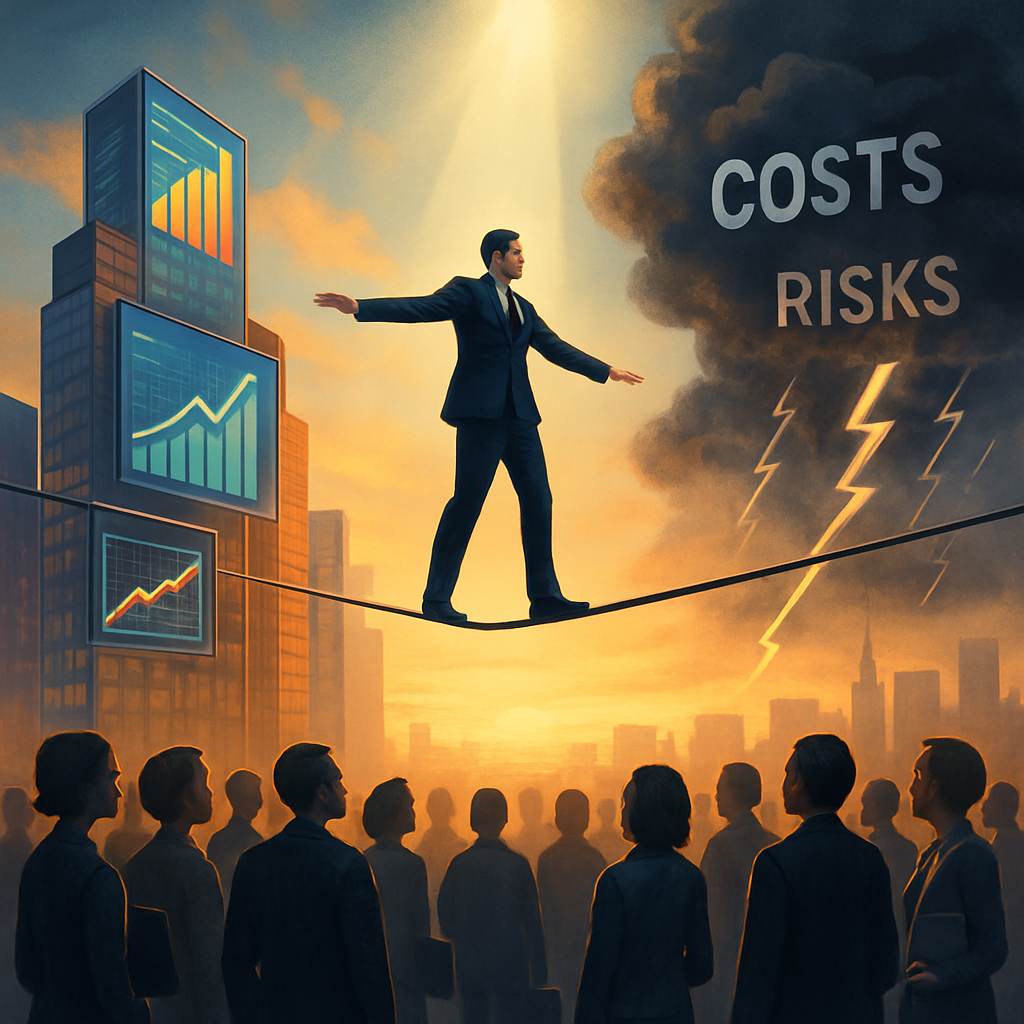Are Your Disconnected Systems Silently Draining Profit and Growth?
Quick Answer

To us it's simple...
"Do things the right way. For the right reasons. Good things will follow."

For CEOs, the path to growth in 2025 feels like walking a tightrope. On one side lies the demand for innovation, expansion and market leadership; on the other, the unrelenting pressure to control costs, protect margins, and hedge against an increasingly volatile global economy.
Balancing these competing priorities is no longer a strategic exercise- it’s a survival skill.
Investors, boards, and employees alike expect CEOs to deliver growth. Whether through new markets, digital transformation, or acquisitions, expansion remains the dominant theme in the C-suite agenda.
But today’s growth story comes with new constraints:
The result? CEOs must find ways to grow smarter, not just faster – leveraging new technology, automation, and partnerships to increase agility without bloating budgets.
Cost discipline isn’t synonymous with austerity. The most successful CEOs are redefining it as a strategic resource allocation – directing investment toward what drives measurable value.
This mindset shift includes:
In short, discipline doesn’t mean “spend less.” It means “spend right.”
External shocks – geopolitical instability, supply chain fragility, cybersecurity threats, and climate events – are rewriting the risk playbook. CEOs can no longer treat risk as a compliance item; it’s now a central pillar of strategic planning.
Leading organizations are:
This proactive approach transforms risk management from reactive defense into a competitive advantage – because the companies that can absorb disruption win market share when others stumble.
The real challenge is integration. Growth, cost discipline, and risk management must coexist, not compete. The modern CEO must be part visionary, part operator, and part risk architect.
Those who strike the balance often follow three guiding principles:
When these elements align, CEOs can pursue bold growth ambitions without betting the company.
The CEOs who thrive in this decade will be those who master paradox – driving innovation while safeguarding stability, pursuing bold visions while protecting the bottom line.
Growth and discipline are not opposites; they are two sides of the same leadership coin.
.png?width=200&name=ProNexus_Square_Logo_-_Tagline_copy-removebg-preview%20(1).png)

Quick Answer

Many successful companies know they can’t (and shouldn’t) do everything in-house. Whether it’s finance, IT, or back-office operations, outsourcing...

In-kind donations (gifts of goods and services rather than cash) are a vital resource for nonprofits – sometimes as meaningful as a cash donation....

Growing your business involves strategic decision-making and effective management of resources, including financial assets. An interim Chief...

List of Fastest-Growing, Privately Owned Companies

When a CEO, CFO, or Executive Director departs unexpectedly, the organization is left vulnerable. Unfortunately, too many leaders underestimate the...